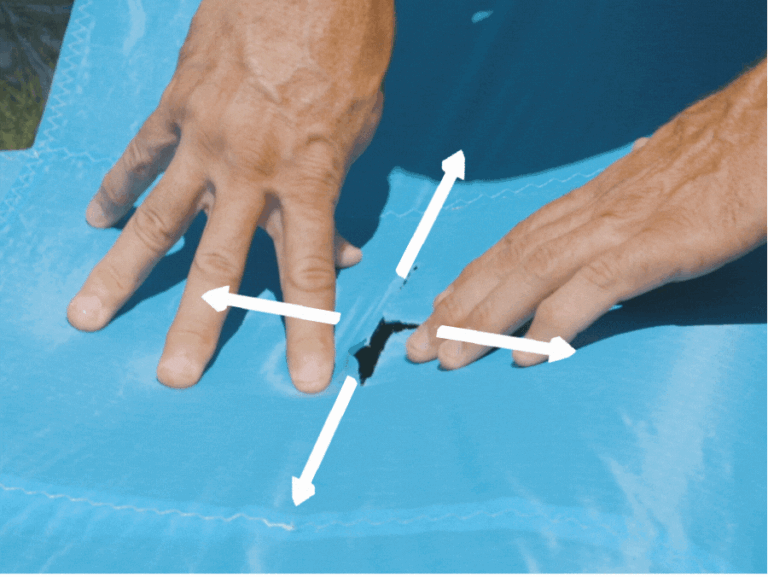Putting a foil through your wing can be quite disastrous, but having a wing with strong canopy material like Superwing X could make the difference between coming home and being able to repair it yourself, or swimming back and looking at expensive repairs.

X-PLY has many advantages. One of the reasons it works so well for a wing canopy is its strength and how it barely stretches. This means we can shape and design the wing exactly as we intend. Because it would take way more force to deform than you apply while winging, SuperWing X will keep its shape for way longer, making it fly just like new session after session.
The force required to put a foil through is also higher. As you can see in the video the foil doesn’t go as far through as the ripstop canopy, but that wasn’t the main goal of the test, as we’re not measuring the exact height or speed of the foil drop.
The key difference here is how the material behaves after the damage. When applying pressure around the tear, the ripstop propagates in all directions and becomes much bigger, while the tear in X-PLY doesnt get bigger, and can be easily fixed by patching the rip.
Video
Regular canopy has the most strength in 0° and 90° degrees but between those, it’s weaker requiring more seams. The extra fibers in x-ply at 0°, -45°, and +45° make it even stronger in those directions. This makes the wing stiffer, more direct, and a lot more durable.
Watch the entire Designer Talk to find out even more about Superwing X and the advantages of X-PLY.
You have successfully joined our subscriber list.